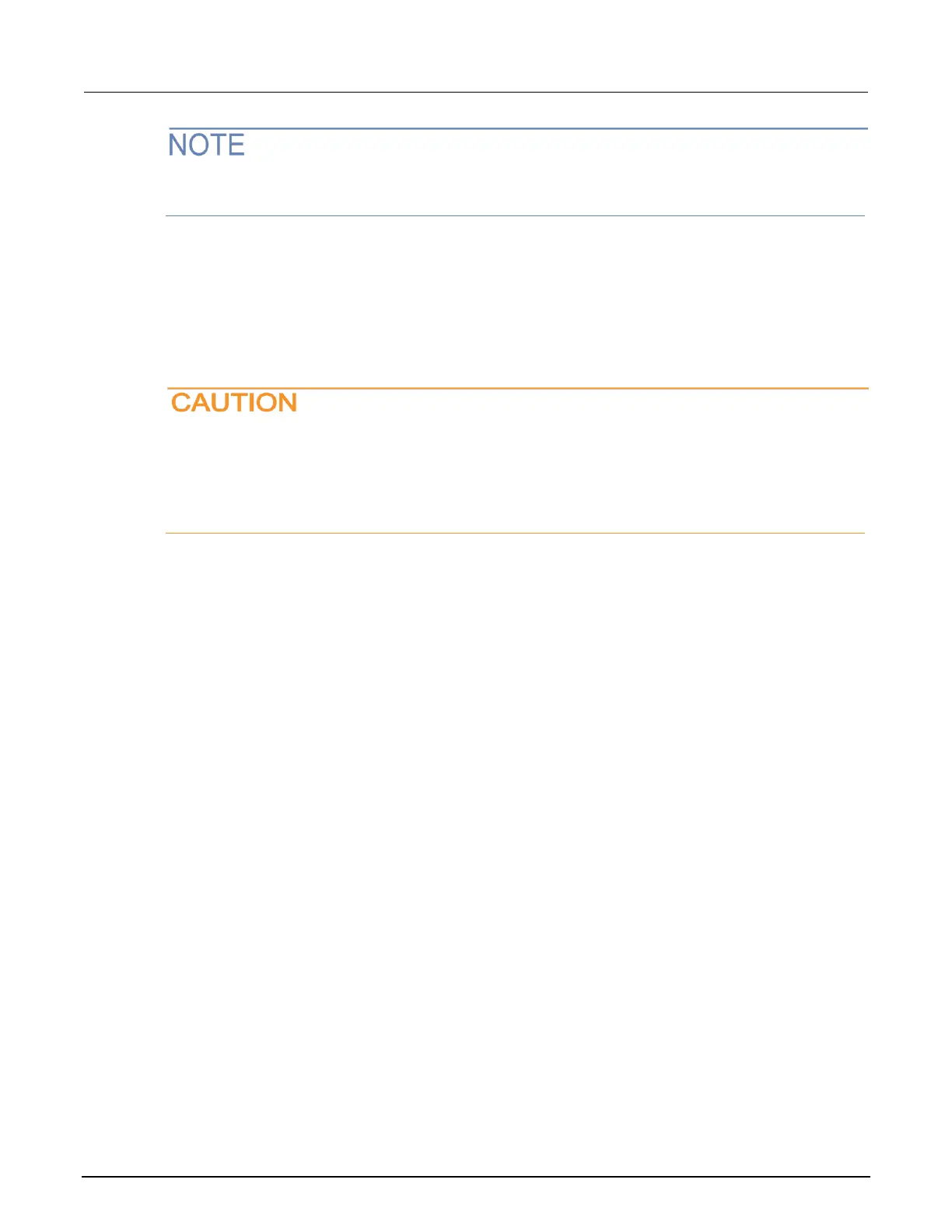The voltage compliance limit applies both to positive and negative voltages. For example, if you set
the voltage compliance limit to 15 V, the voltage limit applies to ±15 V.
For this example, the 2600B is programmed to source −50 mA (the constant current) and to limit
voltage to 15 V. When the SMU turns on, it begins sinking current as determined by the programmed
current source level (−50 mA), causing a decrease in battery voltage. If the battery were ideal and
could be charged negatively, its voltage would continue to decrease until it is negatively charged at
−15 V (shown by the green arrow in the following figure), at which point the SMU is in voltage
compliance.
Reversing the polarity when sourcing current and sinking power may destroy some power
sources. To prevent a negative charge, monitor the measurement of the battery voltage on
the SMU and stop the discharge before the SMU starts to operate in quadrant III (negative
voltage). You can stop the discharge by changing the programmed current source level or by
disconnecting the SMU from the device.
As the battery drains, the battery voltage is lowered as shown by the green arrow. Operation
continues in this direction until the you stop operation or the voltage reaches the voltage compliance
limit. Because the battery is a power source, operation in this example is limited by the capability of
the battery to deliver 50 mA. See the following figure.

